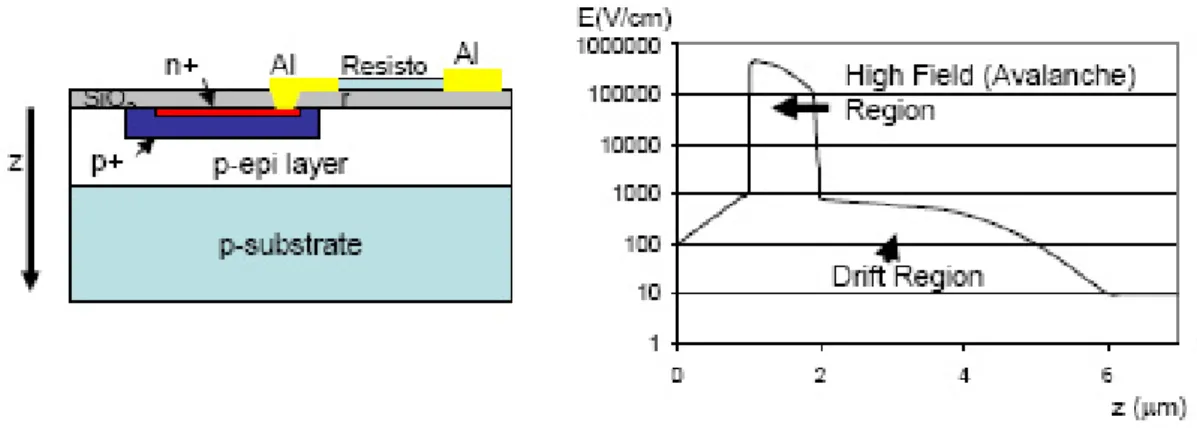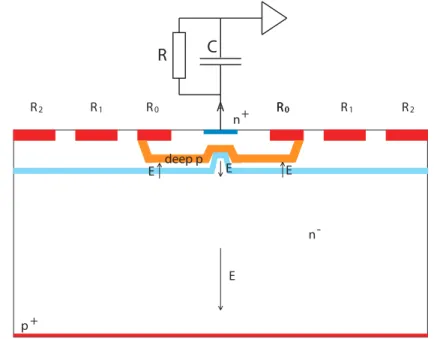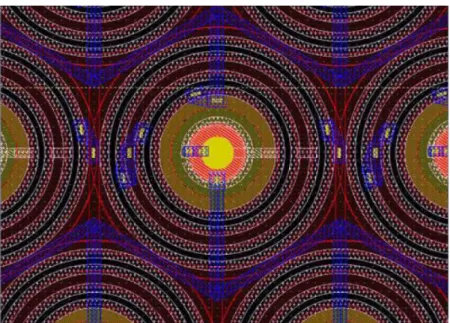PoS(PD07)005
Semiconductor Laboratory
H.-G. Moser ∗ , S. Hass, C. Merck, J. Ninkovic, R. Richter, G. Valceanu Max-Planck-Institut für Physik, Föhringer-Ring 6, D-80805 Munich, Germany
MPI Halbleiterlabor, Otto-Hahn-Ring 6, D-81739 Munich, Germany
N. Otte, M. Teshima, R. Mirzoyan
Max-Planck-Institut für Physik, Föhringer-Ring 6, D-80805 Munich, Germany
P. Holl, C. Koitsch
PNSensor GmBH, Römerstr. 28, D-80803 Munich, Germany MPI Halbleiterlabor, Otto-Hahn-Ring 6, D-81739 Munich, Germany
Silicon Photomultipliers (SiPM) are novel detectors for low level light detection based on arrays of avalanche photodiodes operating in Geiger mode. Though their quantum efficiency is already comparable or better than that of bialkali photomultiplier tubes it is still limited by the struc- tures on the light sensitive front surface. A new concept, presently developed at the Max-Planck semiconductor laboratory, allows boosting the efficiency to almost 100%. Using a fully depleted substrate the light enters through the unstructured backside. A drift diode structure collects the electrons on a small "point like" avalanche structure for multiplication. Engineering the thin en- trance window at the backside using anti-reflective layers a high efficiency can be achieved in a wide wavelength range (300-1000nm). Disadvantages are higher dark rate and increased cross- talk. Results from first test structures and device simulations will be presented. Applications in Particle Physics will be discussed.
International workshop on new photon-detectors PD07 June 27-29 2007
Kobe University, Kobe, Japan
∗


